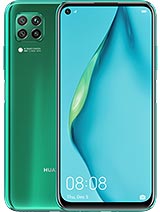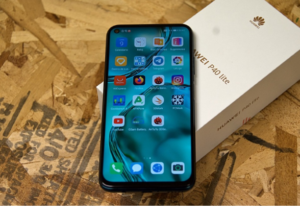Huawei has kept its promise and the Huawei P40 Lite has been put on sale. This smartphone is the first of the new P40 family, its reference terminals, price, design, and camera game has given them so much success in previous years.
Although in this 2020 there is a handicap of unpredictable results in the market: it arrives without Google services and applications installed. We have already thoroughly tested it to tell you all its secrets and what the experience with the new Huawei P40 Lite has been like.
Contents
An unrecognizable Huawei P40 Lite … for good
After a couple of generations with some P series Lite terminals that we could identify quite simply as such, the new Huawei P40 Lite renews its design in many elements, thus achieving a more current image and at first glance better. The feeling of being in front of a higher level terminal than its price tag marks is continuous.
Huawei P40 Lite datasheet
| HUAWEI P40 LITE | |
|---|---|
| DIMENSIONS AND WEIGHT | 159.2 x 76.3 x 8.7 mm 183 grams |
| SCREEN | 6.4 inches 2,310 x 1,080 pixels (398 dpi) |
| PROCESSOR | Kirin 810 GPU Mali G-52 MP6 |
| RAM | 6 GB |
| INTERNAL STORAGE | 128 GB |
| REAR CAMERA | 48 MP f / 1.8 8 MP wide angle f / 2.4 2 MP macro f / 2.4 2 MP depth f / 2.4 |
| FRONT CAMERA | 16 MP f / 2.0 |
| OS | Android 10 with EMUI 10 Without Google Mobile Services |
| BATTERY | 4,200 mAh 40W fast charge |
| CONNECTIVITY | 4G LTE Wi-Fi 802.11ac Bluetooth 5.0 LE |
| OTHERS | Fingerprint reader on the side GPS USB-C |
| PRICE | 299 Euros |
Aesthetics
At the aesthetic level, the most relevant changes are both on the front and at the rear, where the elongated camera module disappears from the entrance. With four elements already starring in the photographic section of this smartphone, the move to a square module design was expected.
The photographic module, from which the flash has escaped, protrudes slightly from the body, but its integration is quite successful.
On the front, we find an “all-screen” design with the presence of a hole for the front image elements.
In hand, the Huawei P40 Lite is comfortable and pleasant to handle. The rounded corners, the slight curvature of the screen and the weight of fewer than 190 grams (we are talking about almost 6.5 inches) help that task. It does not tire anything to hold it in hand. Perhaps the thickness of 8.7 mm is the least prepared dimension but let’s not forget the price of the terminal.
The main material with which the Huawei P40 Lite is made is glass, although the finish on the back seems to be closer to quality polycarbonate than to glass. Huawei claims that this element has been created based on layers of curved glass.
That softness of the shapes and the manufacturing material itself (and the absence of texture in the finish) makes the Huawei P40 Lite a smartphone that due to its size can be somewhat slippery according to your hands. Caution and cloth always ready because that casual and bright touch of the back picks up with enough fidelity and hard traces, something that makes the whole ugly.
Physical fingerprint reader
A ” surprise ” of the Huawei P40 Lite is the choice of a physical fingerprint reader on the side. Let’s remember that we come from a family where the physical reader in the back has been practically a hallmark until a few months ago.
In this new Huawei P40 Lite, that element disappears from view and is placed, not on the screen as you would expect, but on a side button that is also used to double as the power button. Above it is the volume control.
That fingerprint reader allows us to identify ourselves instantly, it is very fast and reliable, and if you get used to managing it intuitively by grabbing the terminal, it will not give time for facial recognition, which is the second biometric identification system of this Huawei P40 Lite.
Speakers and Ports:
Already at the bottom, there is room for the USB-C charging port and the headphone port, which resists in the design of this Huawei P40 Lite. There is also room for the non-stereo speaker, which you have to be careful not to cover to avoid being left without a sound.
The main speaker offers a fairly powerful and crisp sound, enough for occasional multimedia content playback without much fanfare but with quality. The best result is the sound with headphones, at least for the options provided by the configuration of the Huawei Histen system, which supports varying the playback mode between four predefined ones, one of them surrounds, as well as modifying the equalization.
More screen, same resolution
The Huawei P40 Lite is no stranger to the unstoppable growth of the screen diagonal in all ranges and adopts a panel with a size of 6.4 inches. The resolution is in FullHD +, that is, 2,310 x 1,080 pixels, which means a pixel density that is close to 400 dpi. We do not have the amazing clarity of QHD panels but it is more than enough to consume video content, text or habitual use of the terminal on a non-professional level.
The screen of the Huawei P40 Lite has hardly any edges, according to Huawei exceeding 90% of use, a figure that already leaves little room for frames, something that in the visual experience with it is appreciated. It is enough to get the idea that in return we have to get used to that strange hole in the upper left corner, a situation that I prefer aesthetically despite not being centered on the screen.
The panel is not AMOLED, and in this mid-range Huawei still resists taking the leap and maintains IPS technology. The result is correct and balanced for the mid-range, with sufficient brightness for smooth viewing both indoors and outdoors. Also, the color reproduction is reliable and we can customize it with two modes (normal and vivid) as well as managing the color temperature. The vivid mode with default temperature offers a very satisfying experience, with good contrast.
Among the options offered by the terminal to personalize the experience with its screen is the smart screen resolution mode, which automatically adjusts the screen between High and Low (1540×720) to optimize battery life. We can also leave it in manual and choose the one we want.
The screen of the Huawei P40 Lite, IPS and with a good diagonal, offers a very good experience and in accordance with the price we pay for the phone.
On the screen, just in the upper left corner, we find the hole for the secondary camera. It hardly bothers the viewing experience, but we can choose which applications we want to take advantage of the full screen when we use them. Or if we prefer, the system also lets us hide the notch, darkening the area until completing a classic band, an effect that does not convince us at this point.
Processor, RAM, and internal memory to spare for the mid-range
The most unquestionable thing about the Huawei P40 Lite is found in the purest part of its technical sheet. Here we have a brand-name processor, specifically the Kirin 810, accompanied by 6 GB of RAM and internal memory of 128 GB (expandable with proprietary Huawei cards ). Good data for the price we pay for the terminal. There is only that configuration, something that for certain users is appreciated so as not to get lost between prices and options that are too similar often.
On this basis, the experience promised to be good and it has been so. The terminal does not suffer from delays or obvious jerks and we can make full use of the Huawei P40 Lite with good fluidity both when we want to multitask and when we play or keep several tabs open.
| Huawei P40 Lite | Samsung Galaxy A71 | Redmi Note 8 Pro | Xiaomi MI 9T | Nokia 7.2 | |
| Processor | Kirin 810 | Snapdragon 730 | Media Tek G90T | Snapdragon 730 | Snapdragon 660 |
| RAM | 6GB | 6GB | 6GB | 6GB | 6GB |
| Antutu | 303806 | 272988 | 227154 | 211901 | 179462 |
| PC Mark Work | 7808 | 7613 | 7795 | 6024 |
In tests with benchmark software, the Huawei P40 Lite leaves a clear message about its good performance to teams that are already on the market for months at the same price. Here also comes into play the good optimization that Huawei seems to have achieved with the latest version of Android and its customization layer.
Fast charge for everyone
The screen is not the only thing that increases the Huawei P40 Lite. Its battery exceeds 4000 mAh to position itself as a prominent area of the terminal in the competitive mid-range market around 300 euros.
That 4200 mAh battery allows the Huawei P40 Lite to give us the peace of mind of far exceeding the day of intensive use. In total, in our test days, the Huawei P40 Lite has offered us an average of more than 27 hours of use, with between 8 and 9 hours of screen.
The new Huawei P40 Lite boasts good battery capacity but also something very relevant and unusual in this range: fast charging very well backed by a 40W serial charger , thus making this facet of the new Huawei terminal an of its main assets in the market.
This fast charger as standard is greatly appreciated, allowing us to reach 50% of the charge in just over 15 minutes. And in half an hour we can already obtain almost 70% of the total capacity of the battery. Full charge, using the standard 40W charger, is reached in one hour.
App Gallery vs. Google Play: if anyone can do it, it’s Huawei … but it is all the way
Although the Huawei P40 Lite can not count on Google services installed as standard, the base operating system is Android 10 on which we find the EMUI 10 layer of Huawei itself. So far we will not find any difference with a Huawei terminal from last year. Both interface and options and applications/services associated with EMUI are present in this Huawei P40 Lite.
The Huawei P40 Lite reaches the market without Google’s services or app store, which for many users is not an option today
We have the novelties associated with Android 10 such as dark mode or gestures, resulting as we have anticipated in a system that has great fluidity of operation.
As in terminals with other own layers based on Android, the Huawei P40 Pro includes numerous own applications and services such as the browser, mail manager, image gallery, video store, manager of the use of the terminal, optimization or calendar.
The first sign that something is not usual in this Huawei P40 Lite happens as soon as you start the device just out of the box: we are not asked at any time for our Google credentials. It does not because it cannot carry Google services or applications.
If we prefer not to, the terminal is still 100% functional and with access to Huawei’s own application store, called AppGallery and which has left us very cold for now. There are a good number of applications but from an ecosystem below the secondary in almost all the categories of applications that we explored.
In fact, there is hardly any relevant application inside, so for the installation of an Instagram, WhatsApp, Spotify, Netflix, Firefox browser or our bank’s apps, to give just a few examples, you have to resort to direct download packages from the developer’s website (if it exists, which is in very few cases) or from third-party sites.
This way of proceeding may be an extra and not a direct step that acts as an impassable barrier for a user not accustomed to these needs. Add security risks or the heaviness of the updates at hand and the conclusion is clear: for the consumer who usually buys this type of terminal, without access to the Google store, right now the Huawei P40 Lite is a very limited terminal at the level of functionality.
Four cameras for the Huawei P40 Lite, including the macro lens
The Huawei P40 Lite debuts on the market with what seems to be one of the most common camera combinations in the mid-range this 2020. In its photographic module we find a 48 MP (f1.8) sensor that acts as the main camera accompanied by a second 8 MP (f2.4) sensor for the wide-angle camera and two more than 2 MP (f2.4) sensors corresponding to the lenses for macro and bokeh photos.
The Huawei P40 Lite provides us with an available zoom on the interface that ranges from wide-angle to 2-6X, but it should be noted that it is a completely digital model. Here, as we have already seen in other smartphones in this range this year, there is no tele lens as such.
The camera interface is an old acquaintance. It does not stand out for its speed especially and works on the basis of a carousel of main modes well accompanied by many secondary ones placed under the More section. There are modes for just about everything from classic Night Mode, Portrait or Panorama shooting to Macro, Light Painting, Aperture Control, Pro, Document or Motion Photo. This subsection is the HDR mode, which does not have direct management on the main screen of the app.
We do have a single touch to activate/deactivate AI mode, whose effect we can leave activated because in general, it applies a slight effect in most situations.
The main photography mode comes by default (and recommended) with 12 MP resolution. It is with the configuration that we obtain better results. There is a great success in color reproduction, level of detail and dynamic range. If necessary we can resort to HDR mode, but except in very difficult situations.
If we wish, we can choose to take photos with 48 MP resolution, as well as with an extra mode called “48 MP Smart Ultra-sharpness”. In both cases, it is true that we can perform a deeper zoom but with a result that is washed out and artificial in detail.
When we go to low-light scenes, the main camera continues to offer well-argued results under the range we are in. We get neither more nor less than what we should demand.
The Huawei P40 Lite stands out for the low noise it introduces in low-light photos, as well as relatively good control of high beams, although




